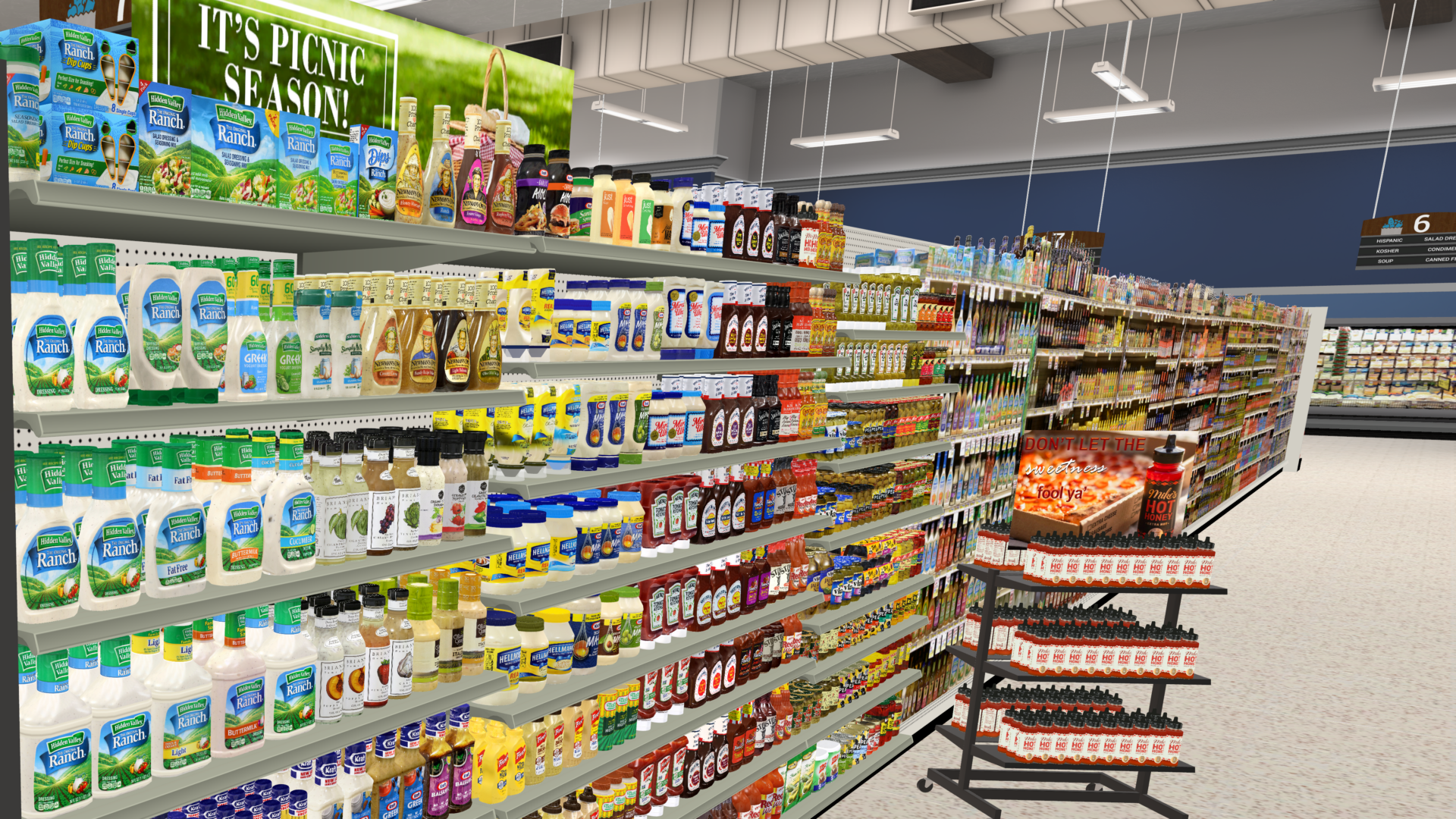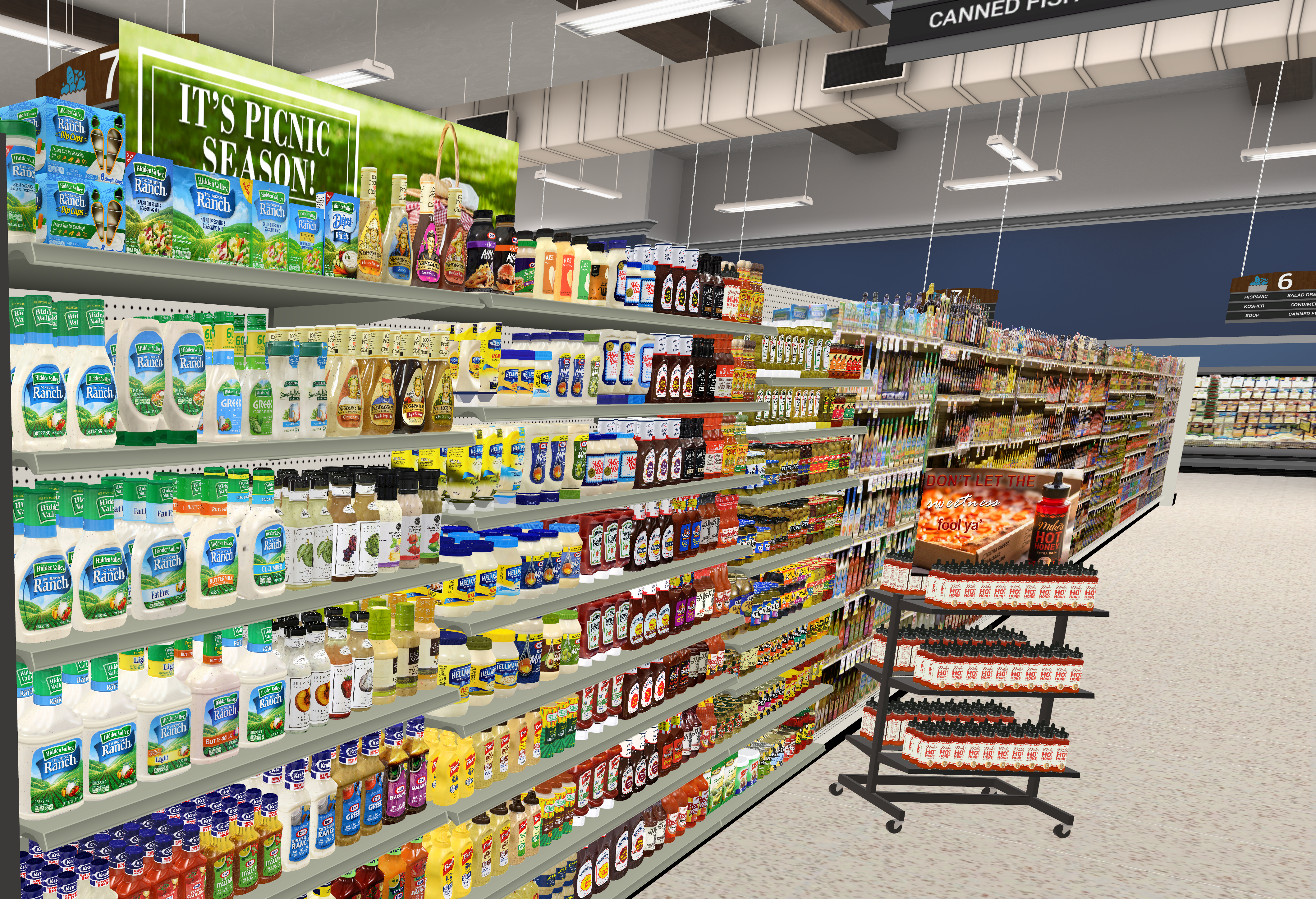In the highly competitive world of retail, the battle for sales is often won or lost at the shelf. A retailer’s shelf strategy plays a pivotal role in this critical decision-making point. A well-executed shelf strategy, focusing on product arrangement, innovative packaging, and finding the optimal price point, can significantly enhance a product’s chances of being picked. In this latest blog post, we delve into the intricacies of these key focus areas, underscoring the vital importance of testing in the retail landscape. We aim to help retailers understand packaging and pricing research methods to master the art of winning at the shelf through data-driven, consumer-centric approaches.
Understanding the In-Store Experience
To determine the most effective way to win at shelf, it’s first critical to understand the in-store experience thoroughly. One of the most significant parts of this equation is how human psychology and emotions impact purchasing behavior. According to an article by Psychology Today, people buy something for a few main reasons.
- They believe they need it. This one is straightforward and speaks to goods and items people consider necessary for their daily lives.
- It makes them feel good. These types of products can be twofold and include products that make the person feel good or brands with a mission people want to support.
- They believe they are getting a deal. Whether or not a person needs an item can sometimes fall aside for a great deal. Sales are a significant factor in why some people make a purchase that isn’t necessary.
- It makes them feel a part of the brand. A brand that stands for something is often enough to sway a customer in their direction. Whether donations to a nonprofit, environmentally friendly packaging, or a commitment to fair employee practices, some people buy products to feel a part of the community the brand eludes.
So, what does this have to do with the in-store experience? A lot.
If psychology significantly impacts most buyers before they enter the store, it will also significantly impact them while shopping. And if a brand isn’t already serving one of the abovementioned needs, it will have a tough time standing out on the shelf. Because many people already have at least a partially predetermined shopping experience in their minds, influencing shopper behavior in stores has to be meticulously planned down to the detail.
As highlighted by Steven Wong in an article on LinkedIn, the modern consumer is bombarded with over 20,000 product choices in a mere 30-minute shopping session. From pricing and packaging that resonates with customers to utilizing the best on-shelf placement strategies, the in-store experience has little room for error when it comes to making its way into the hands of the customer.
So, how do you figure out the best way to captivate your customers? Research.
The Importance of Planning and Research in Retail
Planning and research are the backbone of a successful business strategy in retail. Whether determining the pricing strategy, refining branding, designing packaging, or optimizing in-store shelf placement, each decision plays a pivotal role in driving sales. Meticulous planning in these areas, backed by comprehensive research, directly contributes to enhancing customer satisfaction, fostering brand loyalty, and boosting sales performance. In this way, research not only aids in making informed decisions but also serves as a critical tool in fine-tuning the various elements that contribute to a successful retail operation.
How does it work?
Traditional research
Traditional market research techniques in retail, such as eye-tracking studies, shelf-space analysis, and consumer flow studies, have been fundamental in providing insights into shopper interactions with products and store navigation.
Eye-tracking studies yield data on where survey respondents focus their gaze, uncovering which products or areas captivate the most attention. This research technique also plays a significant role in pricing research methods, determining a customer’s willingness to engage with a given product.
Shelf-space analysis explores the correlation between product placement and sales outcomes, aiding in optimizing product arrangement and pricing strategies.
Consumer flow studies, requiring a substantial sample size, trace customer movement patterns within a store, pinpointing popular areas and paths.
However, these traditional methods have their drawbacks. Eye-tracking studies, while providing detailed data, can be expensive and may only sometimes mirror actual purchasing choices. They require a considerable number of survey respondents to form a reliable case study but might still fall short in predicting true buying behavior. Often based on historical sales data, shelf-space analysis struggles to anticipate future market trends or adapt to shifting customer preferences. It’s essential in pricing research but needs real-time input for greater accuracy. Consumer flow studies offer valuable insights into store layout and design, yet they might not capture the intricate details of individual purchasing decisions or their motivations. Although these foundational research techniques are valuable, they often require the support of more nuanced and current data, including respondents’ feedback on a given product, to thoroughly comprehend and adapt to dynamic consumer behaviors.
Enter virtual reality.
Using 3D Research Merchandising Solutions to Win at Shelf
We know winning at the shelf is about making informed, data-driven decisions. However, there is a growing need for increased accuracy driven by large amounts of data. At InContext, we recognize the transformative power of data in business, so we offer multiple data-driven solutions for retailers to stay competitive.
Our ShopperMX platform epitomizes this philosophy, offering a revolutionary way to test and predict retail outcomes. ShopperMX allows for the creation of digital simulations of store environments, enabling businesses to analyze and understand customer behavior in virtual shopping scenarios. This approach involves populating a digital twin store with 3D replicas of real-life products and categories, and allows companies to gauge performance and customer interactions with different scenarios at the shelf, before any physical implementation occurs. Such preemptive analysis and any subsequent adjustments significantly reduce risk and augment customer experience.
Combine this research method with InContext’s robust database of over 2 million virtual shopping trips to gain near-instant insights into evolving customer behaviors. This exclusive dataset allows for more accurate AI predictions of future trends without having to assemble additional research study participants. Our platform already boasts some of the highest correlation rates in predicting shopper behavior, so when potential scenarios are tested against our AI dataset, companies can compete and excel at shelf faster and more confident than ever before.
With our platform, you can test:
Arrangement
The psychology behind product placement in retail is a subtle yet powerful force in shaping consumer behavior and preferences. Essentially, where a product is placed within a store can significantly influence its visibility and appeal, impacting sales and brand recognition. This strategic positioning taps into various psychological triggers such as convenience, visibility, and perceived value. For instance, products placed at eye level or in high-traffic areas are more likely to be noticed and considered by consumers. Similarly, strategic placements near checkouts can capitalize on impulse buying tendencies. The art of product placement extends to grouping complementary items, enhancing the likelihood of multiple purchases.
Effective product placement can be the difference between success and obscurity for brands. In a competitive retail environment, where numerous products vie for attention, the proper placement can elevate a brand’s visibility, making it stand out amidst a sea of alternatives. This is particularly crucial for new or lesser-known brands seeking to establish a foothold in the market. Conversely, poor placement can render even the most exceptional products invisible to a target audience. For retailers, strategic product placement is equally crucial. It maximizes the profitability of the store layout by guiding customer flow and purchase behavior. This symbiotic relationship between brand success and store profitability underscores the importance of product placement: it’s not just about selling individual items but about creating an environment conducive to overall sales growth, customer satisfaction, and brand loyalty.
New marketing strategies
Testing new marketing strategies is crucial in retail, where understanding what resonates with customers can significantly boost sales. Techniques like cross-category merchandising and endcap merchandising are prime examples of methods that can be experimented with. Cross-category merchandising involves strategically placing complementary products from different categories together, enhancing the likelihood of multiple purchases. In contrast, endcap merchandising focuses on utilizing the ends of aisles for high-impact displays to capture customer attention.
According to Retail Biz, the absence of testing these and other marketing strategies can lead to suboptimal sales performance. Without testing, retailers miss crucial insights into customer preferences and shopping behavior, potentially overlooking what drives sales in their specific context. Experimenting with different approaches allows retailers to identify the most effective strategies and adapt to changing consumer trends and market conditions, ensuring continued relevance and competitiveness in the market. Hence, regular testing and adaptation in marketing approaches are essential for sustaining and enhancing retail sales performance.
New product introductions
The research and testing phase in new product introductions is paramount, especially in a market where consumer habits are deeply entrenched. Drawing from a Harvard Business Review article that references the findings of consultant Jack Trout, it’s evident that American families tend to stick to a repertoire of around 150 items for as much as 85% of their household needs. This statistic highlights the challenge of a new product concept in breaking into these well-established buying patterns. The difficulty of getting a new item on consumers’ radar is further compounded by the current financial climate, which heavily influences purchasing decisions. During times of economic downturn, individuals are far more likely to go into their shopping trip with a specific price in mind. As noted by Consumer Packaged Goods reporter Paul Hiebert, 87% of consumers are turning to store brands for cost savings, despite 57% perceiving these products as lower in quality, showcasing the brand-price trade-off.
This trend underscores the need for new product launches to consider the product’s features and benefits and the broader economic context. Consumers are increasingly value-conscious, and understanding their financial motivations is crucial. Therefore, thorough research and testing must encompass a variety of factors, including market trends, consumer preferences, and economic conditions. This comprehensive approach is central to introducing a new product into the market, ensuring it is appealing, innovative, and aligned with the target audience’s current needs and expectations.
Packaging
The impact of product packaging on consumer purchasing decisions is substantial and multifaceted. As highlighted by Aditya Khanna in an article on Medium, “The packaging is the first visible thing in a product that communicates the message of a brand and shows why a particular product is better than the other alternatives.”. The right packaging can make or break a sale, serving as an essential communication tool that conveys brand identity and product information.
The article also says that “60–70% of buying decisions are made by the buyers inside the store or market.” This highlights that much of the decision relies on the experience with the brand on the physical shelf, with packaging being the front line of this experience.
What are the product features that need to stand out? Packaging elements like shapes, colors, sizes, and labels are at the top of the list. An attractively designed package can draw a customer’s attention amidst a sea of options. Similarly, the packaging size can influence perceptions of value and convenience, while clear labels can provide essential information, building trust and aiding decision-making. In essence, packaging acts as a silent salesman on the shelves; subtly yet powerfully influencing consumers to choose one product over another. This underscores the need for brands to invest thoughtfully in their packaging designs, ensuring they resonate with target audiences and effectively differentiate their products in the highly competitive retail environment.
Pricing
Businesses that conduct pricing research before launching a product are far ahead of the game when it comes to success. According to Bidnamic, “The popularity and pervasive nature of the internet now means price comparison is easier and more accessible than ever, enabling consumers to make faster and more informed decisions, whether in-store or online.” Shoppers’ ability to quickly compare different price ranges increases the price sensitivity of a product, with even small changes significantly impacting the demand.
The art of setting the right price is both complex and critical, necessitating a blend of thorough planning and empirical testing. From conjoint analysis to van Westendorp and Gabor-Granger methods, a myriad of techniques are available for gauging optimal pricing. These methodologies, each with their unique approach, form the backbone of any comprehensive pricing study. They enable businesses to explore various price points, understand customer preferences, and anticipate market reactions to a price increase or a lower price. However, while these pricing techniques provide valuable insights, they cannot fully substitute the real-world effectiveness of price testing. Through actual market trials and consumer feedback, retailers can accurately determine the right price – a price that balances profitability and customer appeal. Price testing, therefore, becomes an indispensable step, allowing businesses to refine their pricing strategy in a way that theoretical models alone cannot achieve. Ultimately, identifying the right price is iterative, requiring retailers to adapt to the insights from studies and real-world testing.
Partner with InContext
Research and testing are critical steps for businesses aiming to thrive in the competitive retail landscape. These strategies are pivotal in understanding consumer behavior, enhancing product visibility, and ultimately driving sales. It’s crucial for businesses to continuously engage in research and adapt their strategies in response to the dynamic nature of consumer preferences and market trends.
As consumer habits continue to shift, the ability to anticipate and respond to these changes will distinguish successful businesses from the rest. This is why we prioritize research-driven strategies, innovate relentlessly, and always stay ahead in creating compelling, customer-centric shopping experiences.
At InContext, we’re leading the way with the right data-driven strategies to ensure your long-term success in retail. From experimenting with different price points and anticipating the demand curve to researching methods surrounding packaging and brand perception, there’s no limit to what we can test — all in a risk-free environment. If you’re ready to improve the customer experience with confidence, contact InContext today.





